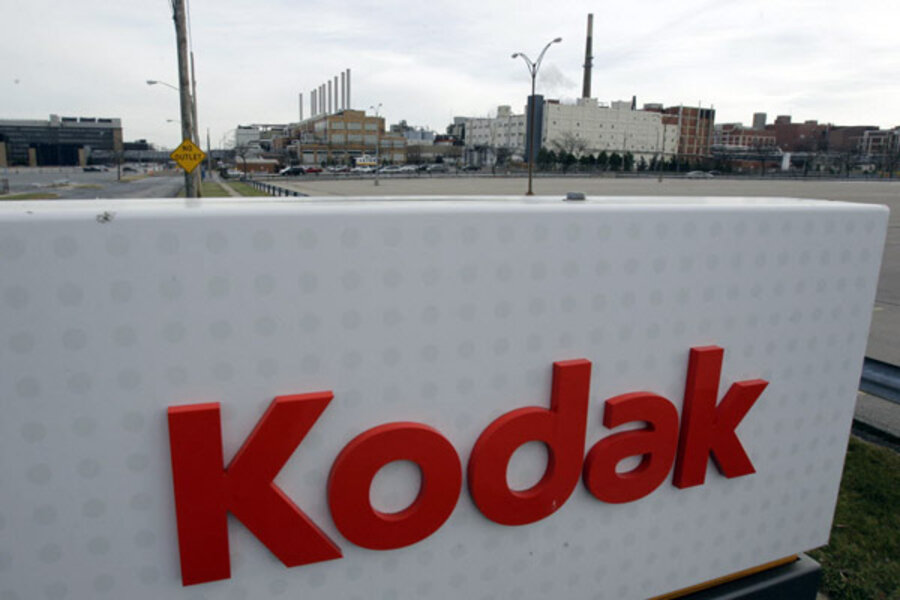Eastman Kodak employees, retirees, stockholders brace for pain
Loading...
| ROCHESTER, New York
The ripple effect from Eastman Kodak Co.'s bankruptcy reorganization extends in many directions: Employees brace again for layoffs, retirees fret over health care coverage, and the photography icon's biggest debtors and stakeholders — from movie studios and big-box retailers to CEO Antonio Perez — are preparing for a sharp sting in their pocketbooks.
Rochester mayor Tom Richards described Thursday's bankruptcy filing as more of a psychological blow than an economic jolt to the city, where Kodak has been the engine of local commerce for 132 years. Its payroll in the medium-sized city along Lake Ontario has slipped below 7,000 from a peak of 60,400 in 1983.
"We have a broader-based economy which is no longer dependent on one industry and one company," Richards said. "We're better off for it. Not what I wish this would happen, but it has happened and we're just going to need to deal with it."
Unable to keep pace with a lightning shift from film to digital technology over the last decade, Kodak said it has secured $950 million in financing from Citigroup Inc., and expects to be able to operate its business during bankruptcy reorganization and pay employees.
The long-awaited move to seek protection from its creditors is "a necessary step and the right thing to do for the future of Kodak," Perez said.
One strength Kodak can take into a restructuring effort is its powerful brand name, said Eli Lehrer, who heads the nonprofit Heartland Institute's Center on Finance, Insurance and Real Estate in Washington, D.C.
However, "that doesn't necessarily translate to people keeping their jobs, or stockholders keeping anything," Lehrer added.
Kodak and its board are being advised by Lazard, FTI Consulting Inc. and Sullivan & Cromwell LLP. Dominic DiNapoli, vice chairman of FTI Consulting, will serve as chief restructuring officer. Kodak expects to complete its U.S.-based restructuring during 2013.
On its website, Kodak assured customers that the nearly $1 billion in debtor-in-possession financing would be sufficient to pay vendors, suppliers and other business partners in full for goods and services going forward. The bankruptcy filing in the Southern District of New York does not involve Kodak's international operations.
Veteran employees say they're even more scared than usual that the latest crisis could sink careers that somehow dodged so many cutbacks. And Kodak's 25,000 retirees in Rochester fear that already diminished health benefits could disappear altogether.
"Because it's unfunded and discretionary. Kodak can actually say tomorrow that we're going to drop health care," said Bob Volpe, who runs a Kodak retiree association with 3,000 members.
Even today, Kodak's influence reverberates in Rochester and its upstate New York surroundings. But that cozy relationship of company and community is being tested as never before by the ice-cold realities of Wall Street.
Kodak and other faded titans like Xerox Corp. and eyewear maker Bausch & Lomb are already overshadowed in the city's employer rankings by the University of Rochester and grocery-store chain Wegmans, which together employ around 34,000 people.





